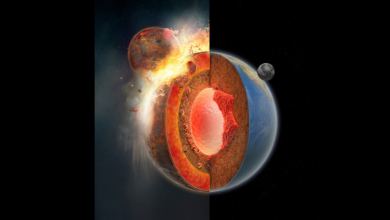As humans set their sights on making a sustainable home on Mars, one of the most pressing problems is the need for developing effective ways to grow food in cosmic conditions. While techniques for farming in Martian conditions have so far been rather limited, recent studies indicate that an ancient practice known as intercropping can become instrumental in improving harvests on the Red Planet.
Developed by Maya farmers thousands of years ago, intercropping, is a technique that consists of cultivating different plants that can be grown together. The technique was successfully demonstrated in a recent test where scientists grew different plants in Martian soil, and results indicate that intercropping may hold the solution to issues faced by plants in toxic Martian soil that lacks nutrients.
Scientists in Wageningen University and Research in the Netherlands set out to test peas, tomatoes, and carrots grown in soils that simulated the surface of Mars. The results were promising as Wieger Wamelink, a senior ecologist in the study, noted, using the harvest as the yardstick:
“We were thrilled when we saw the results. We had expected the peas to grow the best but the opposite turned out to be true. The tomatoes grew the best.”

The tests established that intercropping did not only improve the overall crop at a very high rate, but an unexpected enhancement. For instance, when tomatoes were grown together with other crops, tomatoes produced more fruit compared to when only planted on their own. This symbiotic effect could be a great asset to future Mars missions that require increasing the harvesting yields using the minimal resources available.
Despite this headway, there are still some obstacles to overcome. Notably, Martian soil has toxic perchlorates that can be a million times higher than those in Earth’s soil. To counter this, researchers have considered the option of using microbes to detoxify Mars soil.

Even though this research aims to help farm on Mars, the information could be relevant in farming on Earth. As our planet continues facing challenges due to climate change, briefly considered farming techniques on Mars could improve crop resilience and harvesting even in rough environments on Earth.
As humans continue going beyond space, the need for efficient and sustainable food production systems cannot be underestimated. Intercropping seems like a perfect approach that will make it happen for farmers and grow crops in Martian conditions.

Rebecca Goncalves, one of the researchers involved in the Martian experiments, noted the technique’s potential:
“The results are very promising, and we can now start to think about how to design real intercrops for a future Mars mission.”
As research progresses, we soon should see more sophisticated farming systems designed specifically for extraterrestrial environments. Some companies are already developing autonomous farming systems for commercial space stations that bring us closer to an off-world agriculture paradise.

In summary, the implementation of intercropping to Martian farming is an exciting feat in being a multi-planetary species. When ancient techniques combine with modern science, soon we may have evidence to support growing bountiful harvests on the Red Planet, and who knows, a self-sustained environment for humans.





